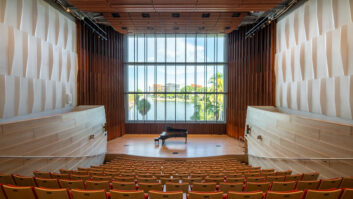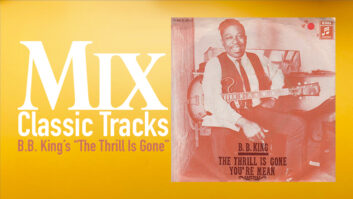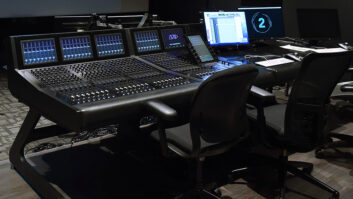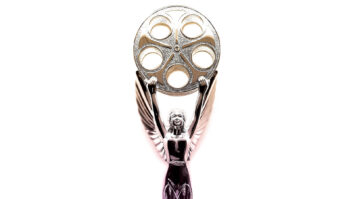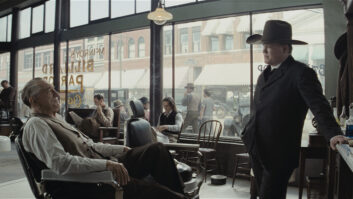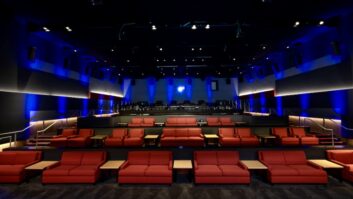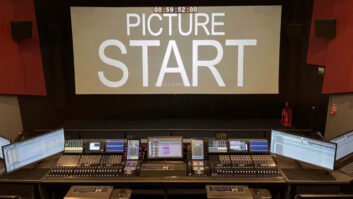Over the last few years, Ricky Skaggs has experienced a surge of creativity, releasing records like Honoring the Fathers of Bluegrass, Solo: Songs My Dad Loved and now Mosaic. Each of these albums further demonstrates his musical versatility as his professional music career continues to inspire generations of fans. This year, his music has picked up no fewer than three Grammy nominations, two of them for Mosaic.
On that album, Skaggs collaborated with Gordon Kennedy, a Nashville-based producer/songwriter who is highly regarded for his work with Eric Clapton, Garth Brooks, Bonnie Raitt and others. The two co-produced the album in Skaggs’ well apportioned studio and invited several guests to contribute—including legendary guitarist Peter Frampton. Pro Sound News spoke to Ricky about the passion and inspiration behind Mosaic.
On the Inception of Mosaic
Conceptually, I never really had a plan how this record was going to be done—I had a feeling inside my heart to do something really out of the box, though. There were certain things I did know—for example, I knew that this was not going to be another bluegrass record.
I have been acquainted with Gordon Kennedy off and on for many years. He put together some songs on a CD and eventually I listened to the tracks—the first song I heard was “Mosaic.” It just touched me deep in my heart. I loved the lyrics of it, but there was something about the sound of the music and the chord changes that reminded me of The Beatles—it was the ’60s thing that got me. I listened to the songs over and over again for about six or eight months. Finally, I called Gordon and asked him to come in and co-produce the record with me.
On a Working in a Conducive Environment
So much of it starts with a really good working environment. If an artist is going to paint or create something, he is going to want to be in an environment that really inspires him: a place that is easy on the eyes, easy on the heart, easy on the hands. I absolutely love being in my studio. I love being cloaked by my instruments, which are always close at hand. I can grab a mandolin, a mandocello, a mandobass or any of my stringed instruments—specially tuned banjos, an old Gibson J 45 or an old Martin. It’s like I’ve got all the tools that I need, plus great microphones and outboard gear. In addition, it’s great to have engineers that I am very fond of close by.
On Using Top Microphones
We have some really good microphones in my studio. I used a Peluso 251, and we also ended up buying a really nice Bill Bradley C12. Most C12s I’ve sung into are a little too zippy on the top end, but this one was great. It may just be where my voice is now in my life. It’s different now than in the Ricky Skaggs days when I was singing all my harmonies, and singing all girl parts with Emmylou on the road!
We use Neumann KM 66s on a lot of the acoustics, and we have a Sony 337 that we use on the mandolin family. We are using Sennheiser mics mostly in the drum realm and as overheads. On the piano, acoustic bass and some background vocals, we use a Neumann M 269s, which are like a 67 but with a broadcast tube in it.
On Tracking a 12-Piece Choir
The choir was from the Born Again Church here in Nashville, and they are just really great. While recording them, we had some close mics and a few others that were more distant—maybe 12 or 15 feet out and up really high to capture some of the room. The distant mics were Neumann 269s, which are the exact same size as the U 67, but have an AC 701 tube as opposed to the 67 tube. It is an old broadcast mic that was used for radio, with a totally different sound than a 67. We also used two M 149 tube mics, which we put in a sweet spot so we could get all the singers. Then we tracked them a second time, but moved people around to bring out a different dimension and make it sound like more people.
On Peter Frampton’s Contribution
Peter and Gordon have been friends for 11 or 12 years; in fact, Gordon helped him produce his instrumental album that he won a Grammy on. We were just finishing up the record, and Gordon suggested that we have Peter come in and play guitar on a track that we needed a lead guitar for.
Peter agreed, and asked if he could use Gordon’s dad’s [Jerry Kennedy] guitar—it is an old Gibson 335 that he had played on Elvis’ “Good Luck Charm.” He had also played it on “Pretty Woman” and “Stand By Your Man.” This instrument had a great history. Peter came in the studio, we shook hands, he turned the guitar on and stood there in front of the speakers in the control room and asked, “What key is this in?” We said, “It’s in B.” “OK, hit it!” he says. I’m telling you, he laid down four perfect solos down, one right after the other. Every one of them was just great—and they were all different.
